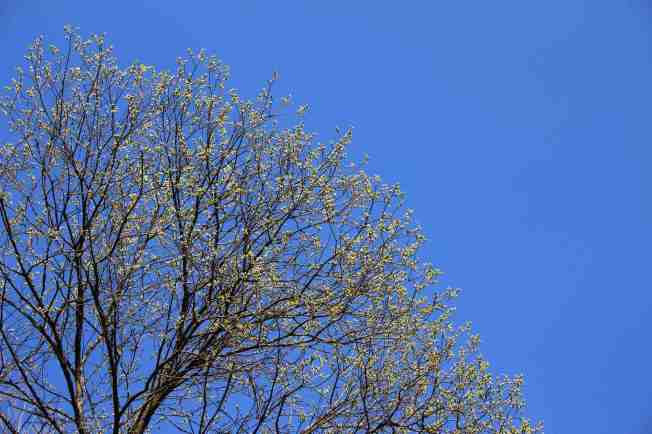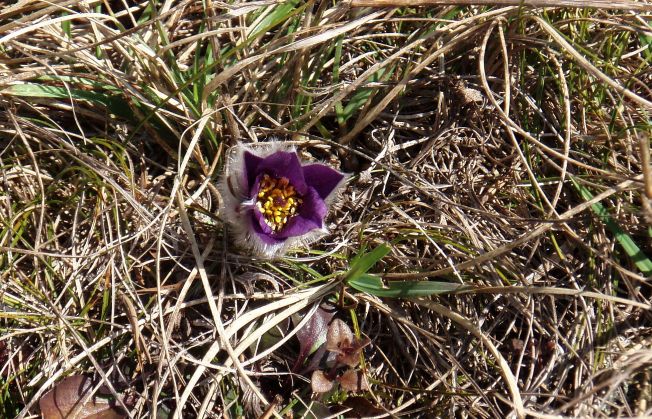These are some of the ancient proverbs passed down through generations, sometimes over hundreds of years, that show us the link between seasons and climate. They may have shifted slightly over the centuries, or have moved due to changes in our calendar (or indeed climate), and some may no longer ring true, but they can be as precise as any long-term weather forecast.
But what is Phenology?
“Phenology is the study of the times of recurring natural phenomena, especially in relation to climate.”
(Source: naturescalendar.org.uk)
~~
“Oak before ash, we shall have a splash
Ash before oak, we shall have a soak”
~~
Phenology is much more than a few proverbs or rhyming weather predictions; observing nature in the form of weather patterns or plant and animal behaviour provides surprisingly accurate information on when to sow, plant, transplant or even prune. According to phenological observations the flowering of the Forsythia for example is an indication that the ground has warmed up enough to plant peas.
Another example of this is that potatoes can go in the ground as soon as the first dandelions have opened.
 The first pollen, the first flight of bees and butterflies, the emergence of leaves on the trees, or the first appearance of migratory birds can vary by weeks each year, and can thus give a far more precise insight into the conditions prevailing than the normal calendar. For vegetable growers the phenological calendar provides helpful insights – such as not to sow your beans until the lilac is in full bloom – but it is of interest to me for estimating when annuals can be sown or planted out, when the spring tidy-up is due, or if bulbs can still be planted in autumn.
The first pollen, the first flight of bees and butterflies, the emergence of leaves on the trees, or the first appearance of migratory birds can vary by weeks each year, and can thus give a far more precise insight into the conditions prevailing than the normal calendar. For vegetable growers the phenological calendar provides helpful insights – such as not to sow your beans until the lilac is in full bloom – but it is of interest to me for estimating when annuals can be sown or planted out, when the spring tidy-up is due, or if bulbs can still be planted in autumn.
Every gardener can benefit from closely observing nature and interpreting its signals – not only for better results, but simply for pleasure too. Watching out for butterflies and bees or the first snowdrop are things many of us do already.
A bit of history
In 8th century Japan the emperor’s experts in Kyoto began recording the beginning of the cherry blossom season; the flowering of the cherry was considered an important symbol of the reawakening, fragility and transience of all life and is today still celebrated with extravagant ceremonies and festivals.
However, it was not until the 18th century that a European began to take down similar records; Robert Marsham, a wealthy landowner from Norfolk, began to catalogue consistently first flowering dates (such as snowdrops), insect activity, seasonal weather and temperature changes, tree foliation, crop growth, and the first sightings of butterflies and migrating birds. (His family continued this tradition until the mid 20th century.) In the meantime Carl von Linné, the Swedish botanist, had started a network in Sweden with 18 stations and a German institute in Mannheim began an international project. By the late 19th century Germany was keeping consistent records with a researcher called Hermann Hoffmann calling for Europe-wide data to be brought together in one databank.
The world wars in the first half of the 20th century ensured that phenology did not lose importance, since feeding the nation had become a matter of survival and any phenological guidelines considered helpful for growing crops were given priority. This trend continued after the war, when food was still scarce and agriculture was trying to catch up. But with the onset of new production methods and chemicals in agriculture the records were gradually phased out in the 1960s and were only revived in the 1990s when talk of global climate change emerged: Canada, the UK and the USA were some of the first states to revive their phenological observation networks at this time.
Today phenological observations are not only of interest to agriculture however… the tourist industry is keen to be able to predict, for example, the famous cherry and apple blossom season in Hamburg, and hayfever sufferers can benefit from knowing when certain pollen is likely to be in the air.
In Bavaria over 250 volunteers (1,200 nationwide) collect data for the German Meteorological Service (Deutscher Wetterdienst), which recognizes not just four seasons, but TEN, beginning with the production of the hazel flowers and ending with the dropping of the larch needles. I will post about each of these ten phenological seasons tomorrow, so I hope you’ll stop by to take a look.
Do you use old proverbs to help you in the garden?
Interesting links:
The USA National Phenology Network
ATTRA National Sustainable Agriculture Informaton Service (USA)
Nature’s Calendar (UK – Woodland Trust)
Centre for Ecology and Hydrology (UK)






























